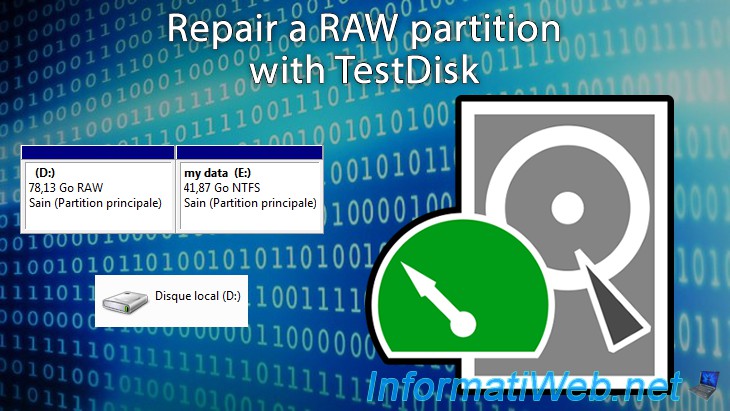


In this case, "transparently" means that PTP devices do not get block devices. PTP cameras are transparently handled by libgphoto and/or libptp. Digital cameras operating in PTP (Picture Transfer Protocol) mode will not work in this regard. In order for some of the utilities listed in the next section to work with flash media, the device in question needs to be mounted as a block device (i.e., listed under /dev). # dd if=/dev/target_partition of=/home/user/partition.image To make an image, one can use dd as follows: are likely to be small enough to image in many cases.īe sure to read the man pages for the utilities listed below to verify that they are capable of working with image files.
TESTDISK INSTRUCTIONS PORTABLE
For example, flash memory devices like thumb drives, digital cameras, portable music players, cellular phones, etc. Mount it read-only.Īs an alternative to working with a 'live' partition (mounted or not), it is often preferable to work with an image, provided that the filesystem in question is not too large and that you have sufficient free HDD space to accommodate the image file.
TESTDISK INSTRUCTIONS PC
Keeping the drive in the freezer with cables connected to the recovering PC works great.ĭo not attempt a filesystem check on a failing drive, as this will likely make the problem worse. A bit of time in the freezer is appropriate, but be careful to avoid bringing the drive from cold to warm too quickly, as condensation will form. (Discuss in Talk:File recovery)Ī tried and true method of improving failing drive reads is to keep the drive cold. This paragraph is mostly untouched since 2009 and might not be applicable to modern drives.
TESTDISK INSTRUCTIONS DRIVERS
Select files to copy using :(colon) key and after copying, C key to copy the selected files and navigate to the destination to copy files to and press C key again to start copying.Reason: Although written on the blog of a data recovery company, it seems there are voices against the "freezer trick" on drivers from the last 10 years. Navigate to /home directory: drwxr-xr-x 0 0 4096 2 03:58. I proceeded and got this: Disk /dev/sda - 512 GB / 476 GiB - CHS 62260 255 63 I couldn't understand anything, So I proceeded to Quick Search and after 5-10 minutes I got this: The harddisk (512 GB / 476 GiB) seems too small! ( MS Data 1000215182 1999863068 999647887 I selected my Drive, selected EFI GPT partition type, and selected Analyse and I got this: So I booted into Windows 10(works fine) and used TestDisk to recover lost data. It crashed midway and after I tried rebooting to Pop OS, I am unable to boot into it. I booted to a Linux Mint Live Disk and used Gparted to move the unallocated space after the 150GB Pop OS and expand it. This is what my partitions looks like now:Įarlier the Unallocated 20GB space was just after OS(C:) partition.


 0 kommentar(er)
0 kommentar(er)
